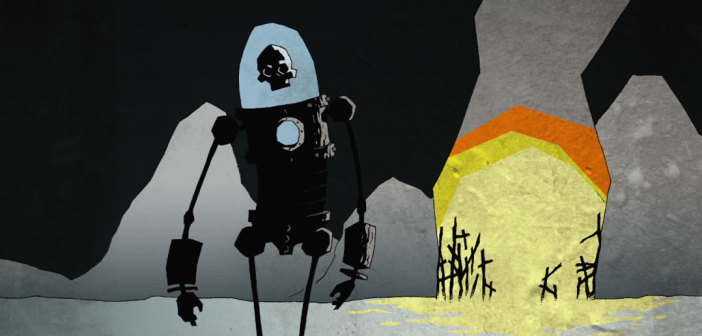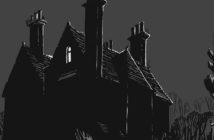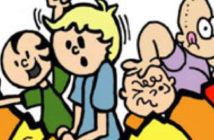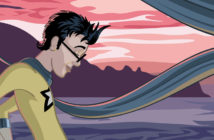I’m always worried that the independent books I enjoy the most will run out of steam long before it’s their time to fade into obscurity. Thankfully, that’s not the fate of Robot 13, a delightful independent comic created by writer Thomas Hall and artist Daniel Bradford, the founders of Blacklist Studios. The story isn’t faltering; not at all. It’s healthily growing into something special.
Robot 13 is a standout book because of its confidence in its vision and pacing. This is a story of few words; writer Hall doesn’t pummel us with heavy caption boxes that pollute the page, but rather he works with artist Bradford to set a mood of direction and art. I often wonder to myself if writers feel the need to instill profuse amounts of prose into their books to simply say to readers: “Look, I’m the writer, and so I’m going to write as many words as possible.”
Hall’s confidence is above this. He’s using his abilities to set the scene and establish the mood. When he writes words on the page, it’s mostly dialogue, and his characters are of few words. Typically this would bother me because I value strong character interactions, but the creative duo here is able to say it all in as few words as possible. There are a lot of looks and quite a bit of posturing, which communicates all we need to know.
This is the most cerebral issue of the three that have been released thus far. It’s the conclusion of the “Colossus” arc, and we see a split between yet another monster trampling down the countryside in search of Robot 13, who is currently recovering in the cottage of an old blind man named Oliver and his faithful dog, Lucky. I’m sure this is a tip of the proverbial hat to the classic scene in the original Frankenstein film released in 1931, in which the monster is shown empathy from a blind man in a very similar situation.
As for the beast on the prowl, it’s a Cyclops who is summoned from his mountainous forge to find and destroy the “man of bronze.” Like in the two pervious issues, Robot 13 engages in a battle of wit and style against the creature; these fights are determining the character’s fate piece by piece, which is what the book is all about. I’m captivated not because of the excellent art and wondrous monsters, but the bizarrely sympathetic nature of the mechanical hero we’re cheering for.
If I was going to find fault with the series thus far, I’d say that it has a bit of a routine with the robot getting into and out of trouble with a new monster in every issue. I’ve gone back and reread all three installments, and I see that the second chapter is the weakest for this very reason; it’s the same scenario from the first issue exactly, just a different palette of imagery for Bradford to work with.
But I’ve been shown up here in the third issue. After some critical thought, Hall has tricked me a little. This is an issue of rest, where 13 is more developed as a polite and mannered lost soul (metaphorically, not literally) instead of an action-packed Terminator knockoff. The fight with the Cyclops is a subservient plot point in order to propel the hero’s journey further.
Ever since I first read this book, I was magnetically attracted to the art of Bradford. I’d be dishonest if I didn’t point out the similarities to Mignola, though in my own discussions with the artist, he attributes his flare to inspiration from Stephen Gammell. But I don’t care what his illustrations look like or where he finds his muse. He’s definitely among my top picks for best independent artist and his work on this story is a triumph of the darker side of the collective imagination. And it’s not just his line-work; he used heavy primary colors to set a pulp mood that sucks me in every time.
I’m happy to say that I cannot get enough of this book, and I recommend that everyone shell out the few dollars it takes to join along with Robot 13 on his journey of adventure and discovery. My tastes being what they are, I tend to care less about battles and action scenes, and more about the cerebral moments of sharp characters and compelling exposition. All of that is here: there is a plot point in this issue that shows the robot in a situation reminiscent of a touching scene from Edward Scissorhands, where the old inventor is reading fairytales to the partially assembled Edward, which prompts him to learn how to smile for the first time.
Scenes like that one are appearing more and more in the book, and if the breathtakingly powerful final image on the last page is any indicator, we’ll be seeing a lot more of what Robot 13 is feeling, and not just what’s next on the menu for a good fight.
This comic book review originally appeared on Broken Frontier on 05 March 2010.




